Hello, artisan bees of the Hive! I hope you're having a lovely day.
This post is my entry for the June challenge hosted by DIYHub, focused on Recycling, Upcycling and Repairing. I decided to create a personalized notebook as a gift, using only materials I already had at home.
Hola abejas artesanas de Hive, espero estén tenido un lindo día hoy.
Esta publicación es mi participación en el reto de junio de DIYHub, enfocado en reciclaje, reutilización y reparación. Decidí crear un cuaderno personalizado como regalo, usando solo materiales que ya tenía en casa.
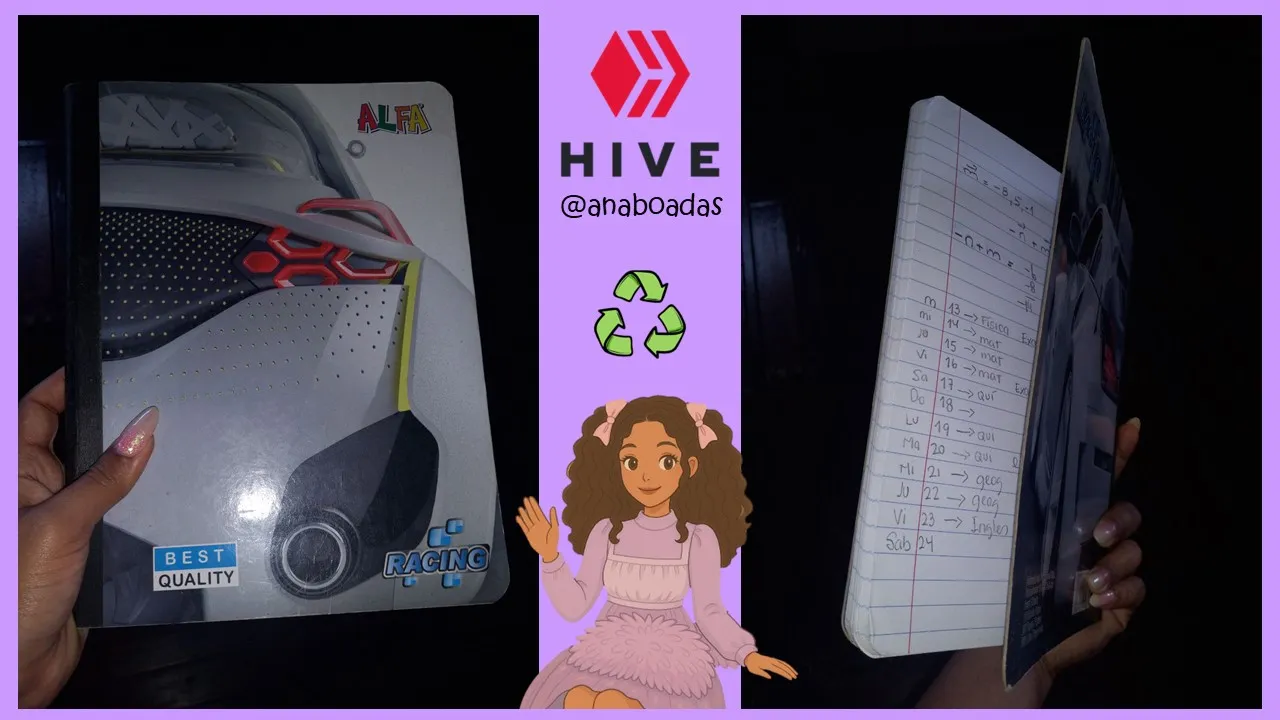
For days I had been noticing that he needed a notebook or diary to write down his projects, but I knew he needed something a little bigger and a little more personal, and even if I found it in a store, I couldn't afford to buy it.
So, being the crafty fairy that I am, I got to work on this notebook made from recycled materials.
Hace días que lo veía necesitando un cuaderno o agenda para anotar sus proyectos, pero sé que necesitaba algo un poco más grande y un poco más personal, y aunque lo encontrara en una tienda, el dinero no me alcanzaba para comprarlo.
Así que como el hada artesana que soy me puse manos a la obra con este cuaderno hecho con materiales reciclados.
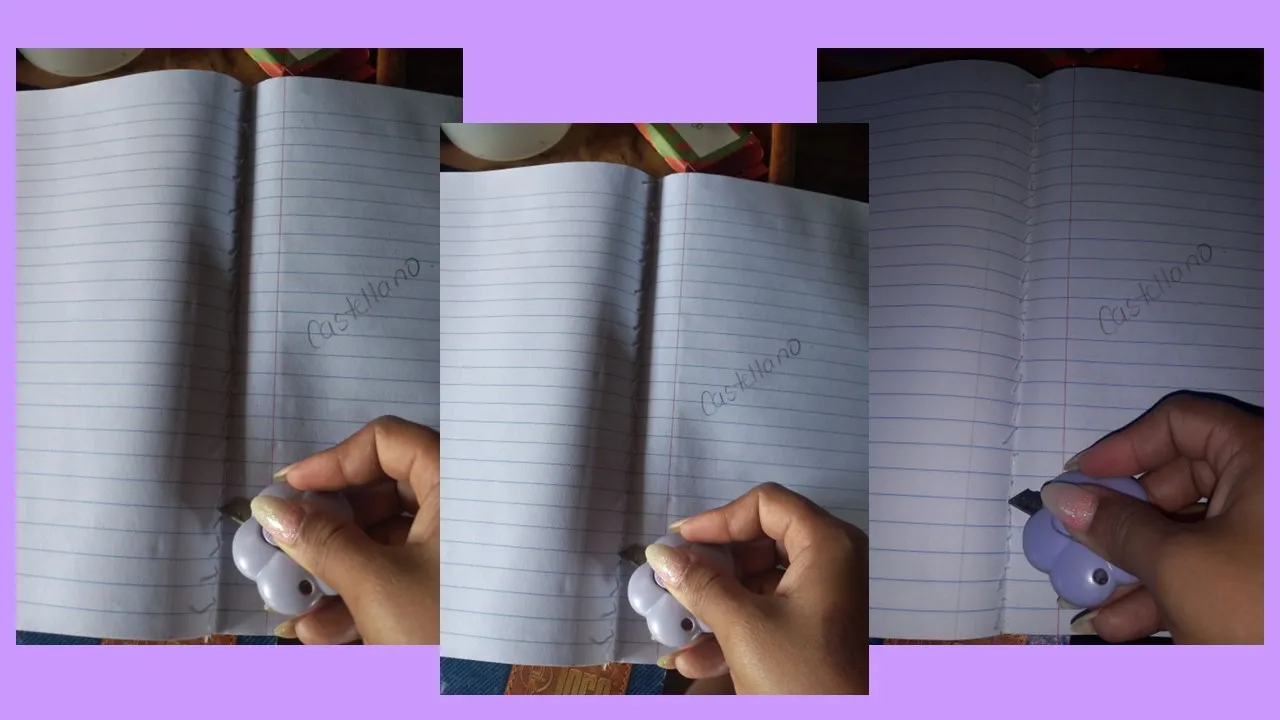
The materials I used were:
- An old notebook from when I was in school.
- A long skirt that no longer fit me, made of slightly worn navy blue suede fabric.
- A scrap of blue ribbon from a gift I once gave.
- White glue
- Clothespins
- Needle and thread
- A thimble
- Silicone gun
- 2 sticks of silicone
- Scissors
- Construction paper
- A ruler
- A pencil
- An X-Acto knife or flower-shaped blade
Los materiales que utilicé fue:
- Un cuaderno viejo de cuando iba a clases.
- Una falda larga que ya no me quedaba, de tela gamuza algo gastada, color azul marino.
- Un retazo de cinta azul de un regalo que alguna vez dí.
- Pega blanca
- Ganchos de ropa
- Aguja e hilo
- Un dedal
- Pistola de silicon
- 2 barras de solicon
- Tijeras
- Papel de construcción
- Una regla
- Un lápiz
- Un exacto o cuchilla en forma de flor
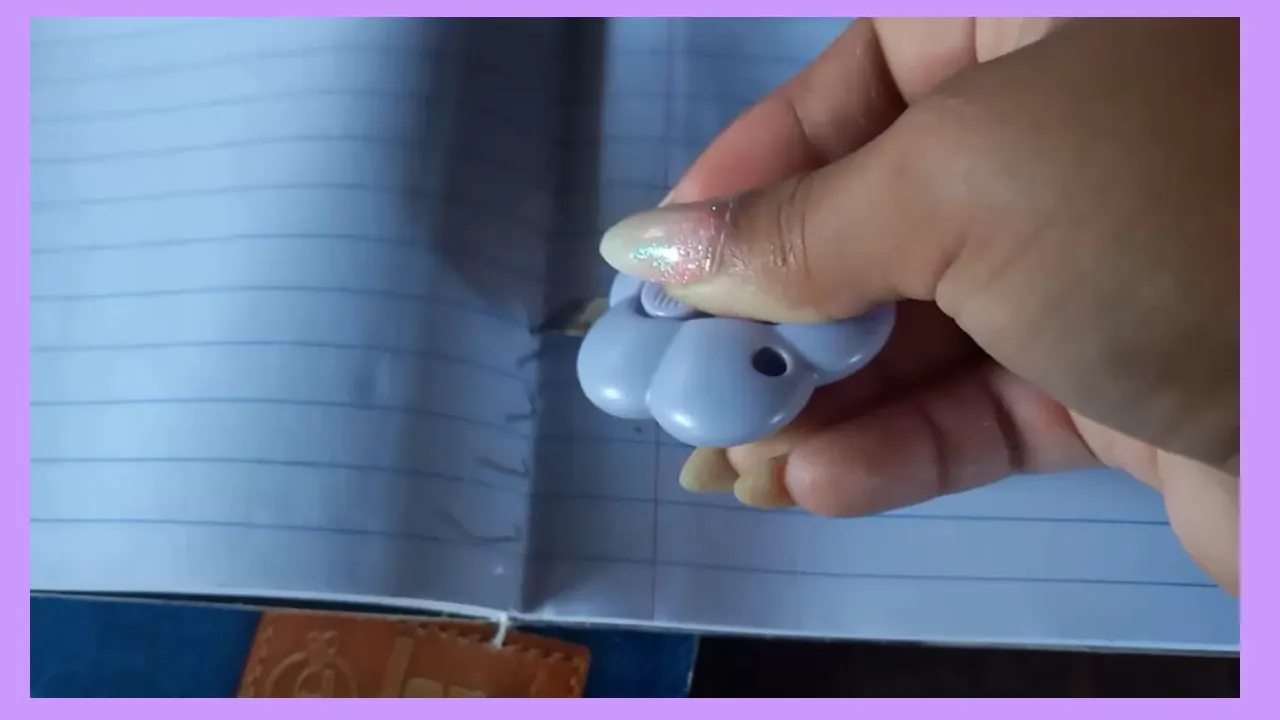
The first thing I did was take this old notebook I found, which still had many unused pages, and open it right in the middle to cut the seam running through the middle with the flower-shaped blade.
Lo primero que hice fue tomar este cuaderno viejo que me encontré pero con aún muchas hojas sin usar, y abrirlo justo a la mitad para cortar con la cuchilla en forma de flor la costura que pasa por el medio.
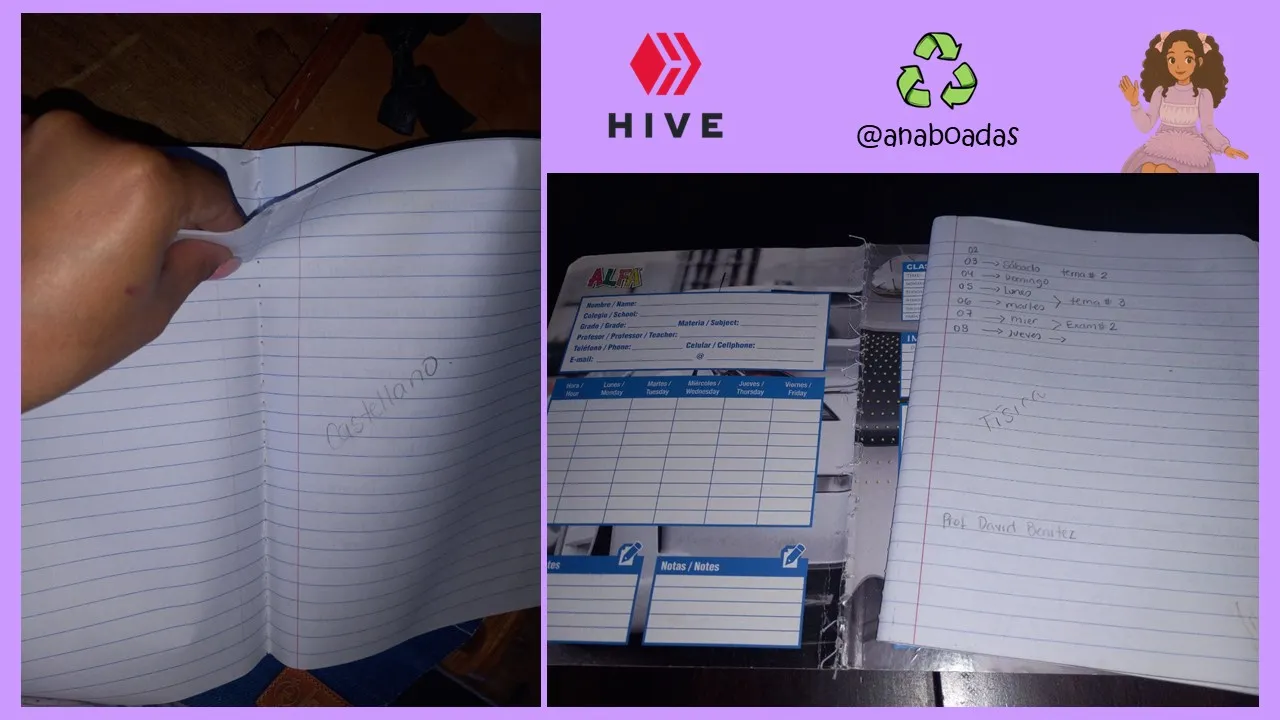
After that, I started to separate the pages from the notebook.
Luego de eso empecé a separar las hojas del cuaderno.

Then remove the threads that remained in the middle of the cardboard.
Para luego quitar los hilos que quedaron en el medio del cartón
I spent a long time thinking about and looking for something to use as the cover for this notebook, but honestly, I couldn't find anything better than the cover it already had.
Estuve mucho tiempo pensando y buscando que usaría como tapa para este cuaderno pero sinceramente no encontré un mejor cartón que la misma tapa que esta traía.
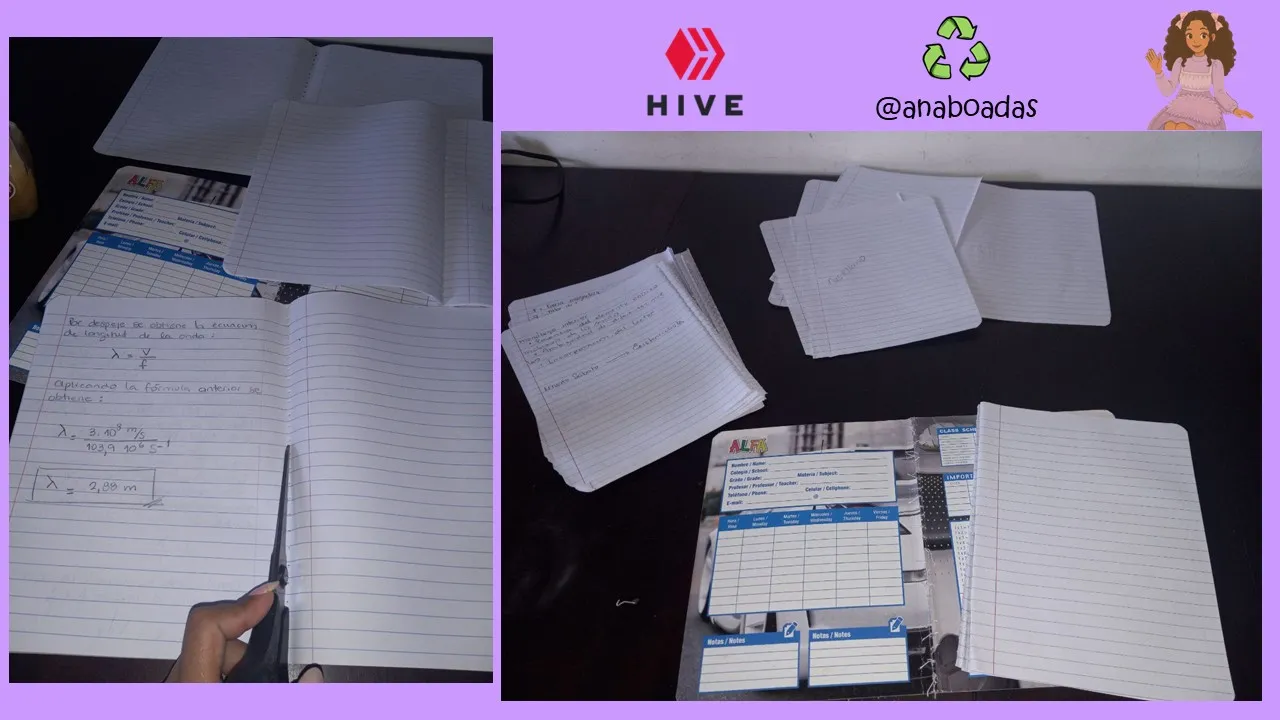
But before putting on the lid, I cut the leaves in half with scissors, using the seam line as a guide so that they would be straight.
Don't cut too many leaves at once because they roll up when you cut them and the ones at the back end up crooked.
After that, I began to separate the lined sheets from the blank sheets.
Pero antes de ir con la tapa corté a la mitad las hojas con una tijera, guiándome con la línea de la costura de las mismas para que quedaran derechas.
No muchas hojas al mismo tiempo porque se ruedan al cortarlas y quedan chuecas las de atrás.
Ya luego de eso empecé a separar las hojas rayadas y las hojas limpias
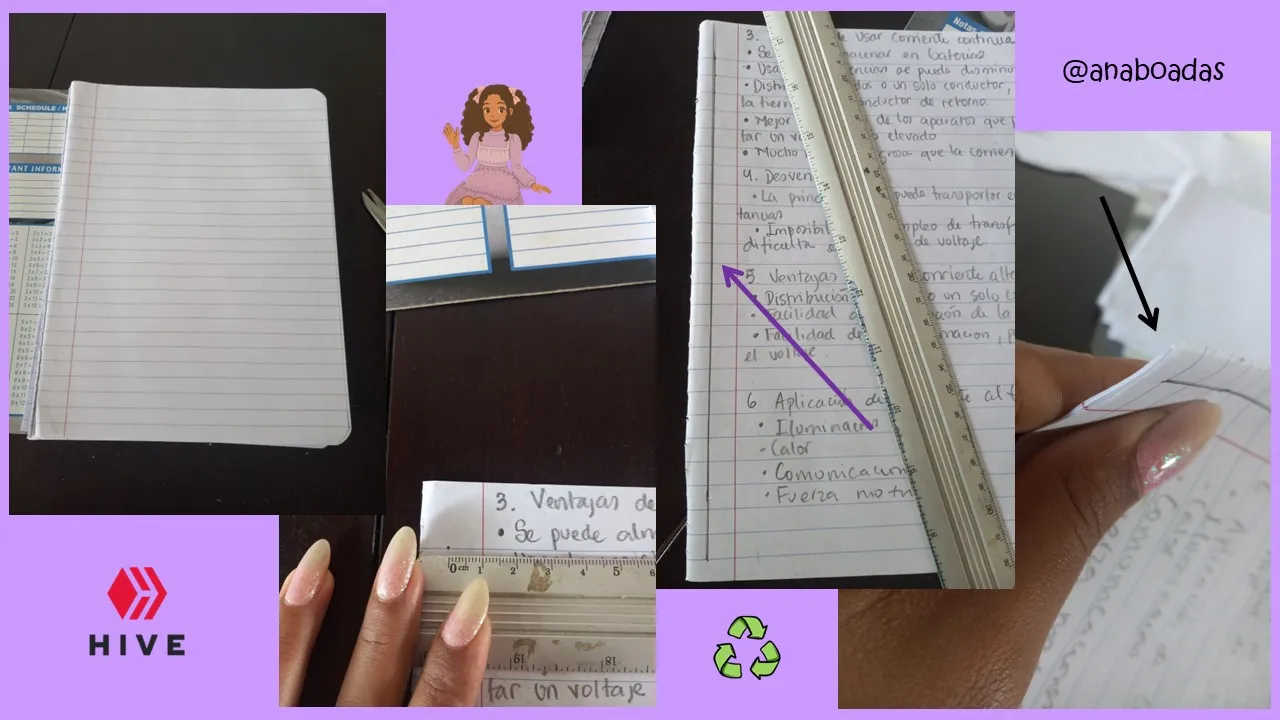
To keep only the ones that were unused
After that, I used the red line on the sheet as a reference to mark a centimeter away, where I would like the seam of the sheets to go.
Para quedarme solo con las que estaban sin usar
Después de eso tomé como referencia la línea roja de la hoja para marcar un centímetro de distancia, por donde me gustaría que pase la costura de las hojas.
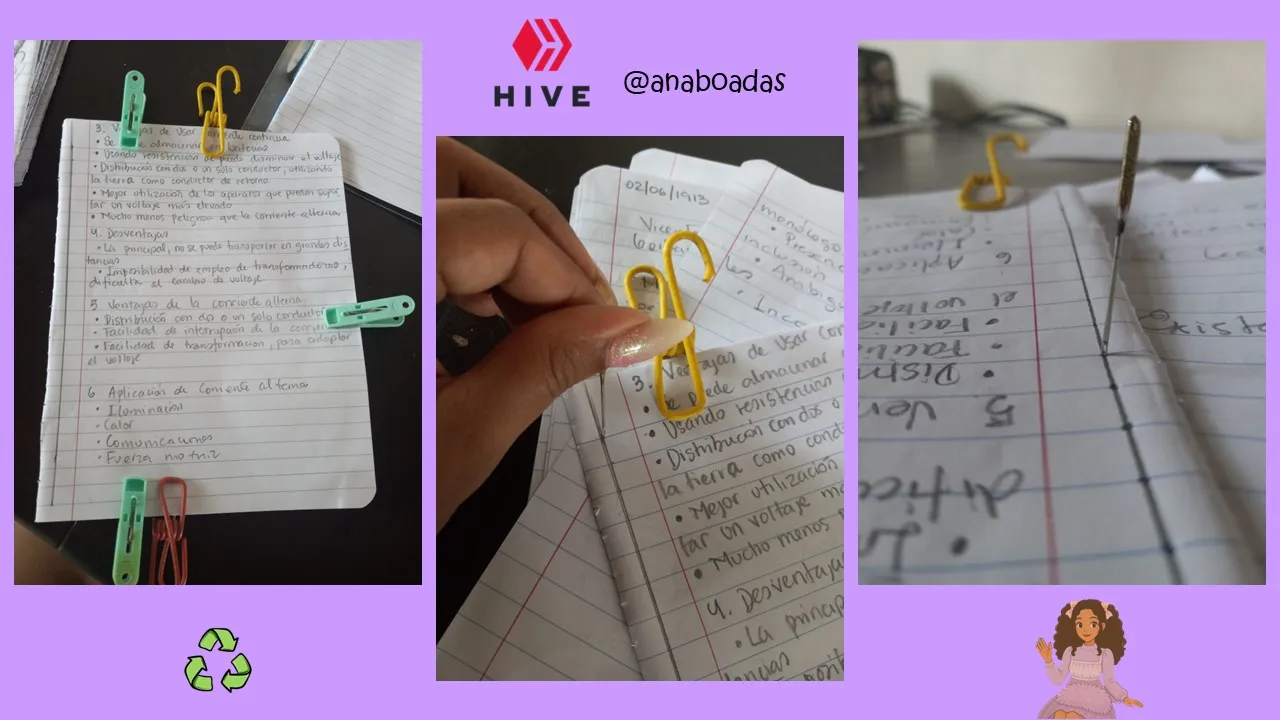
I used a single sheet as a guide to mount it on top of the batches of sheets to be perforated with the thickest needle I had, and to prevent the sheets from moving while they were being perforated, I held them down with clothes pegs.
Usé una sola hoja como guía para montarla encima de los lotes de hojas para perforadas con la aguja más gruesa que tenía, y para evitar que se movieran las hojas mientras las perforaban, las pisé con unos ganchos de ropa.
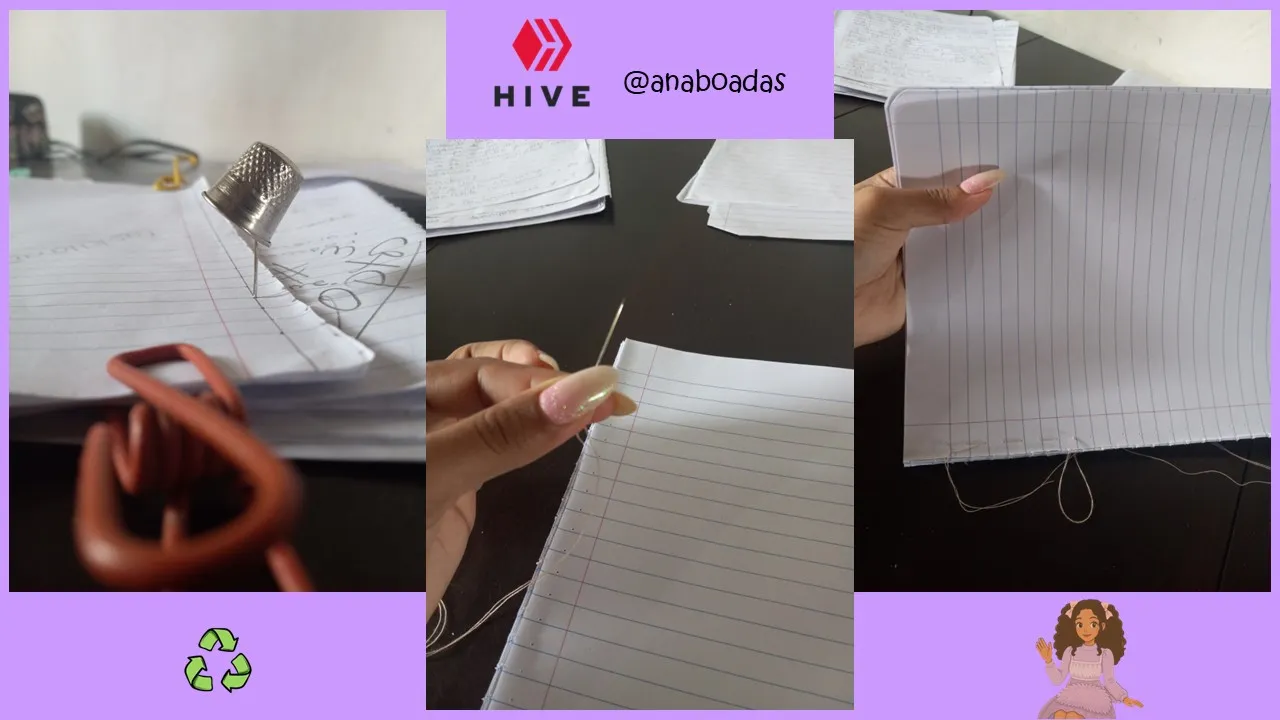
At some point, my fingers started to hurt from piercing the leaves, so I used a thimble to protect myself.
My main idea was to sew the leaves together and then glue them to a cardboard spine, but that didn't work out very well. It was very difficult to sew all the leaves together, and the edges weren't even.
En algún punto me empezó a dolor los dedos de perforar las hojas así que tomé un dedal para protegerme.
Mi idea principal era coser las hojas para luego pegarlas en un lomo al cartón, pero eso no me salió muy bien, se complicó mucho coser todas las hojas juntas y no quedaban parejas en los bordes.
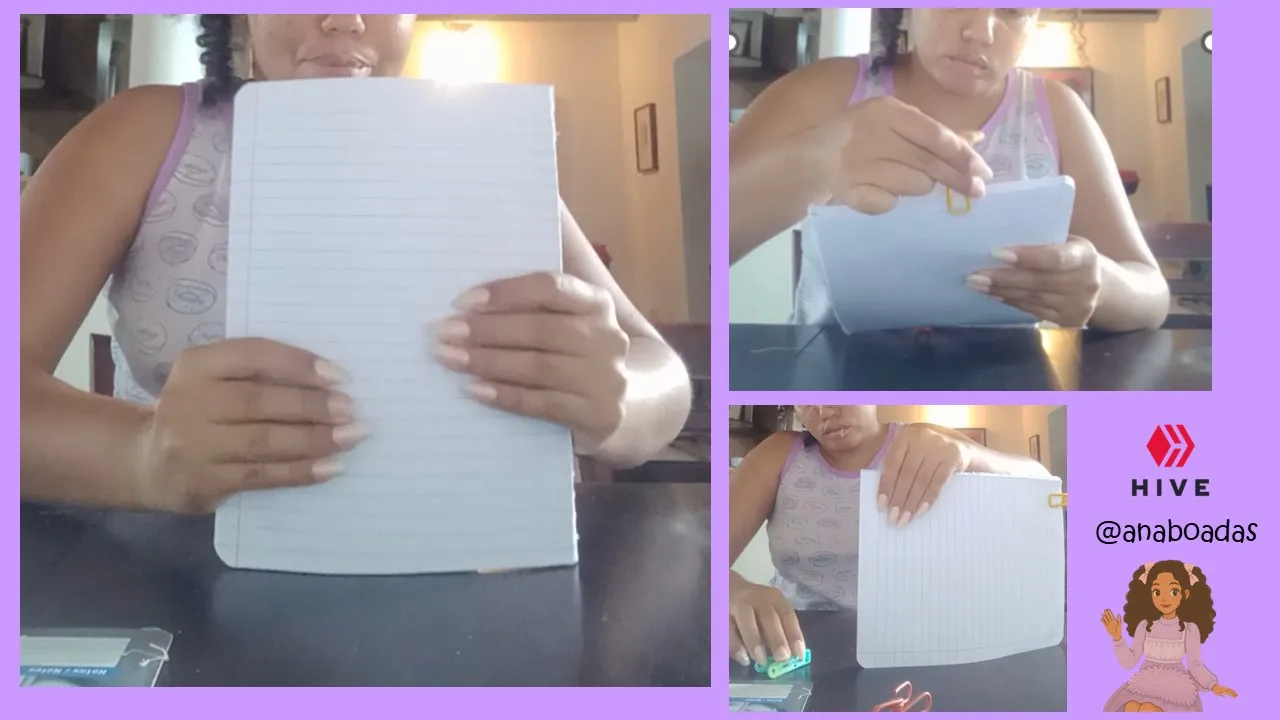
So I decided to start over. I carefully arranged the sheets so that they were even, as I wanted, and held them in place again with clothes pegs so that they wouldn't move.
Así que decidí iniciar de nuevo, junté muy bien las hojas para que quedaran parejas como quería y las sostuve nuevamente con ganchos de ropa para que no se movieran.
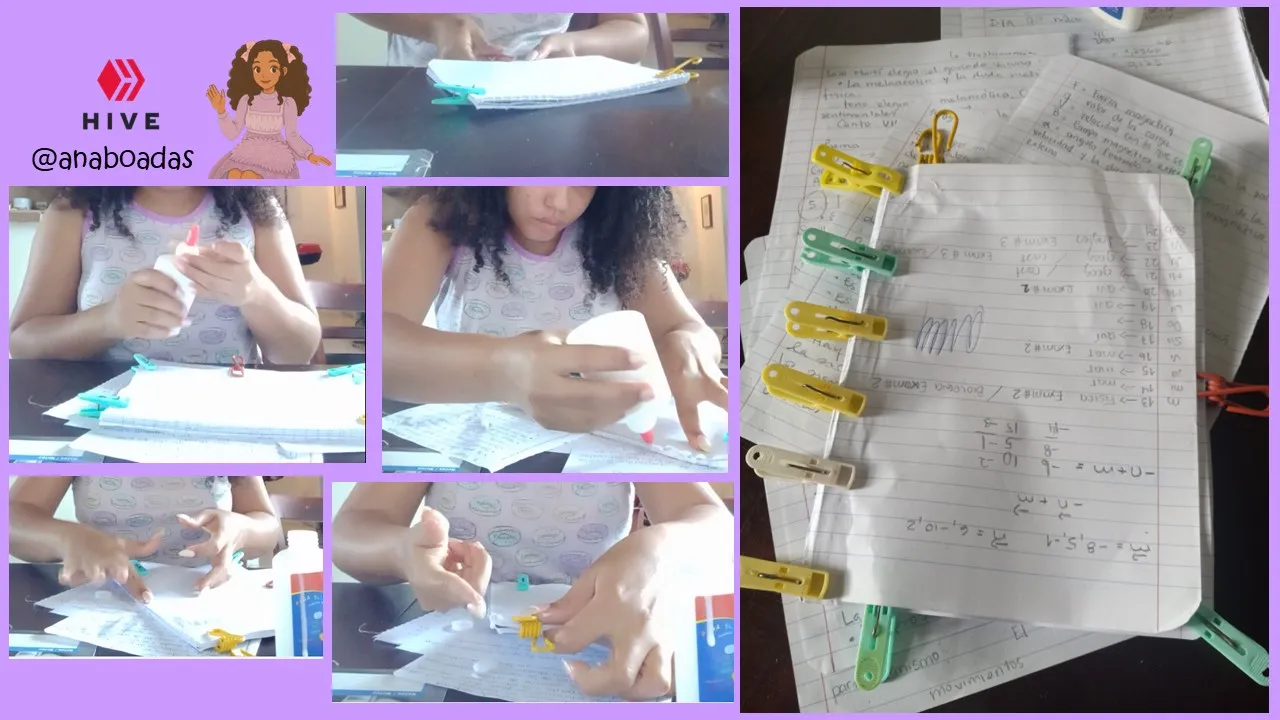
I decided to glue them with white glue around the edges, making sure there was enough glue between the pages. I finished by placing them between an uncut sheet of paper that wasn't lined on the inside, and then secured them with more clothes pegs while they dried.
The sheets that I had initially separated because they were scratched, I used as protection for the table where I did this project, and I saved others to make sewing patterns.
Decidí pegarlas con pega blanca por todo el borde, asegurándome que llegara suficiente pega entre las paginas. Rematé metiendo las entre una hoja sin cortar pero que por dentro no estuviera rayada, para luego fijarlas con mas ganchos de ropa mientras se secaban.
Las hojas que separé en un principio por estar rayadas, las usé como protección para la mesa donde hice este proyecto y otras las guardé para hacer patrones de costura.
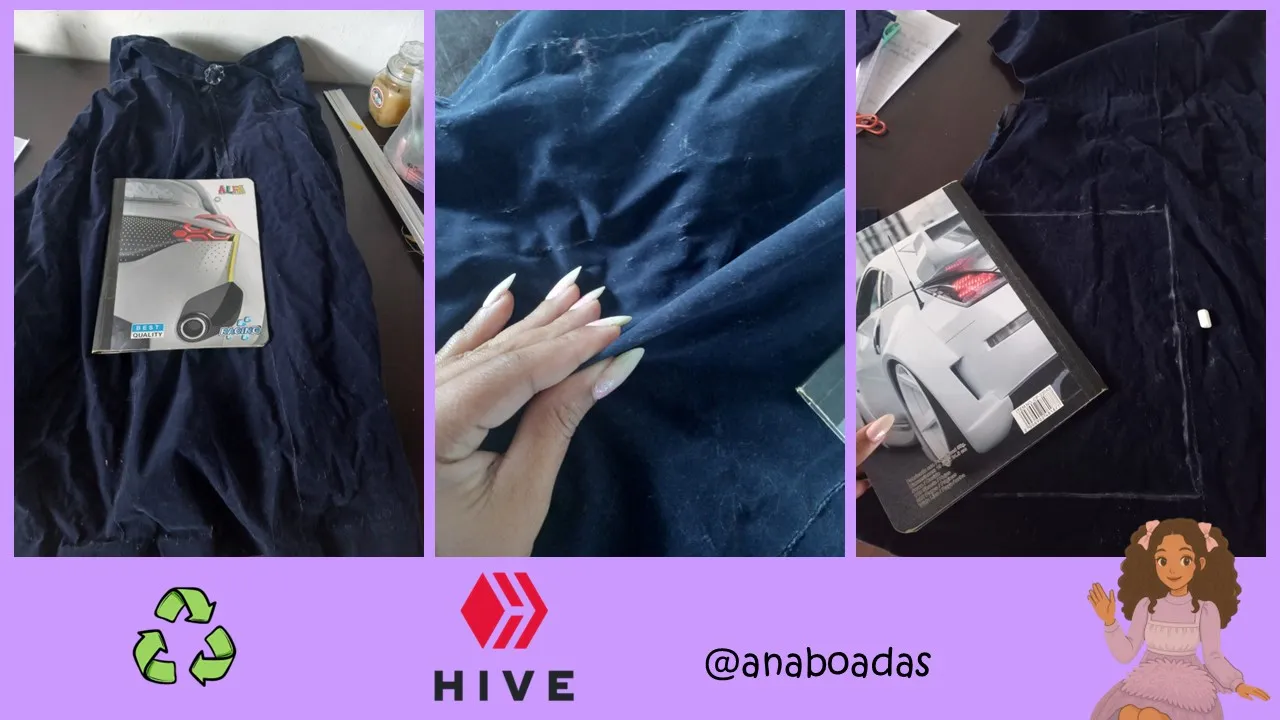
While the leaves were drying, I started looking for the good parts of this old skirt to cover the lid, since it had been stored away for a long time and, in my opinion, the fabric had deteriorated because it showed a lot of wear and tear. However, when I stopped using it, it was still new.
En lo que las hojas se secaban, empecé a buscar las partes buenas de esta vieja falda para forrar la tapa, ya que tenía mucho tiempo guardada y a mi parecer la tela como que se venció, porque presentaba mucho desgaste, sin embargo cuando la dejé de usar seguía nueva.
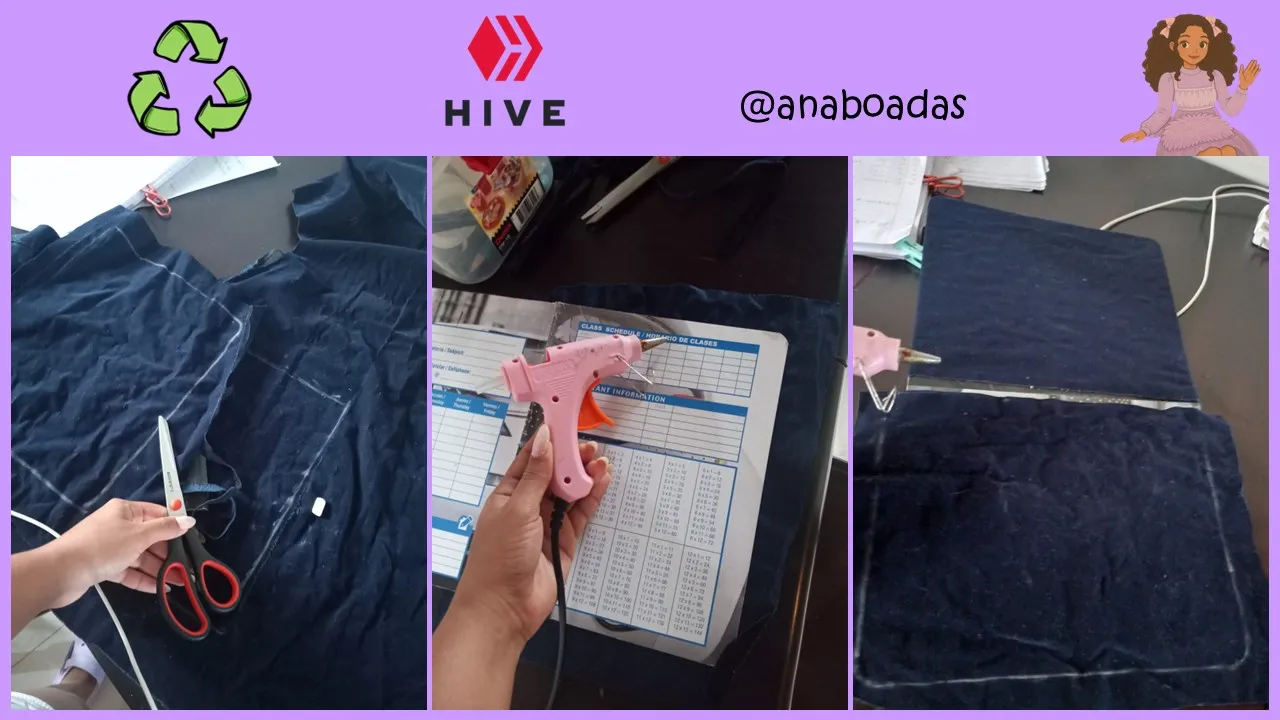
Mark the size with chalk and cut an extra 1.5 cm so that you can glue it on the inside with a silicone gun.
Marqué el tamaño con una tiza y corté un centímetro y medio adicional para poder pegarla por dentro con una pistola de silicón.
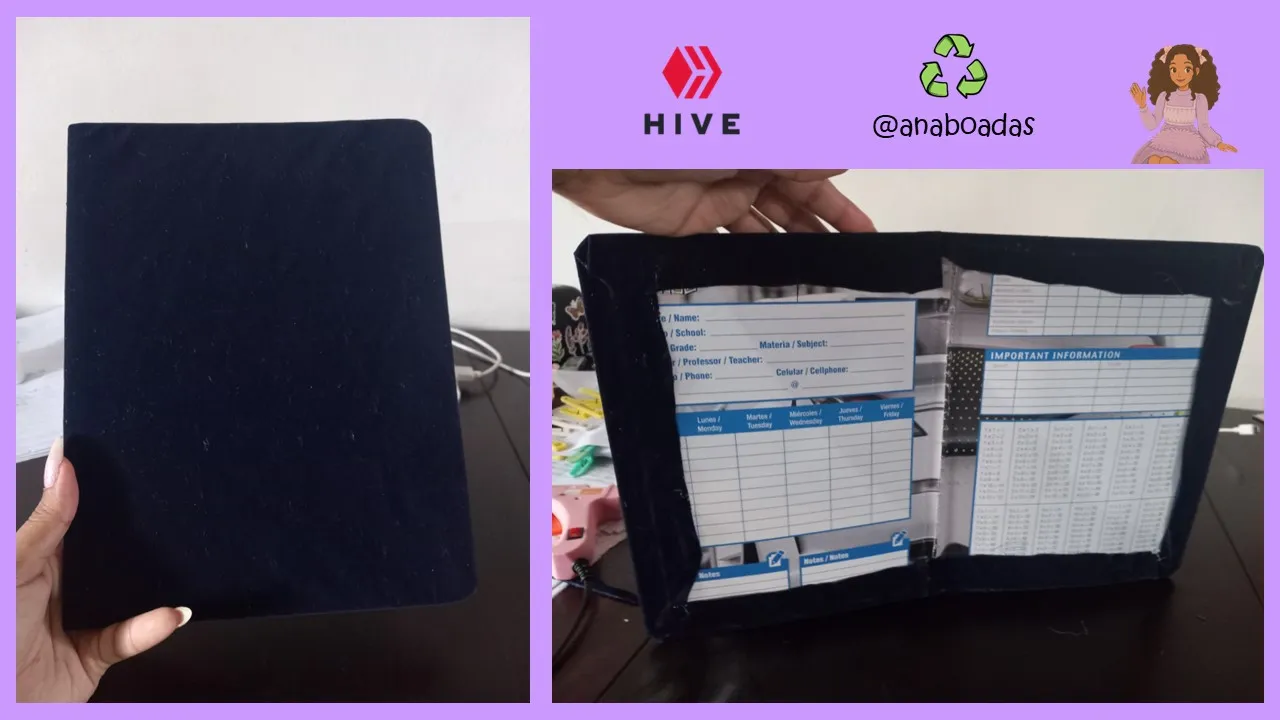
This is how it looks lined and glued on the inside. I only used two pieces of the original fabric, placing one piece on top of the other right on the spine.
Así se ve forrada y pegada por dentro, solo usé 2 retazos de la tela original, montando una tela encima de la otra justo en el lomo.
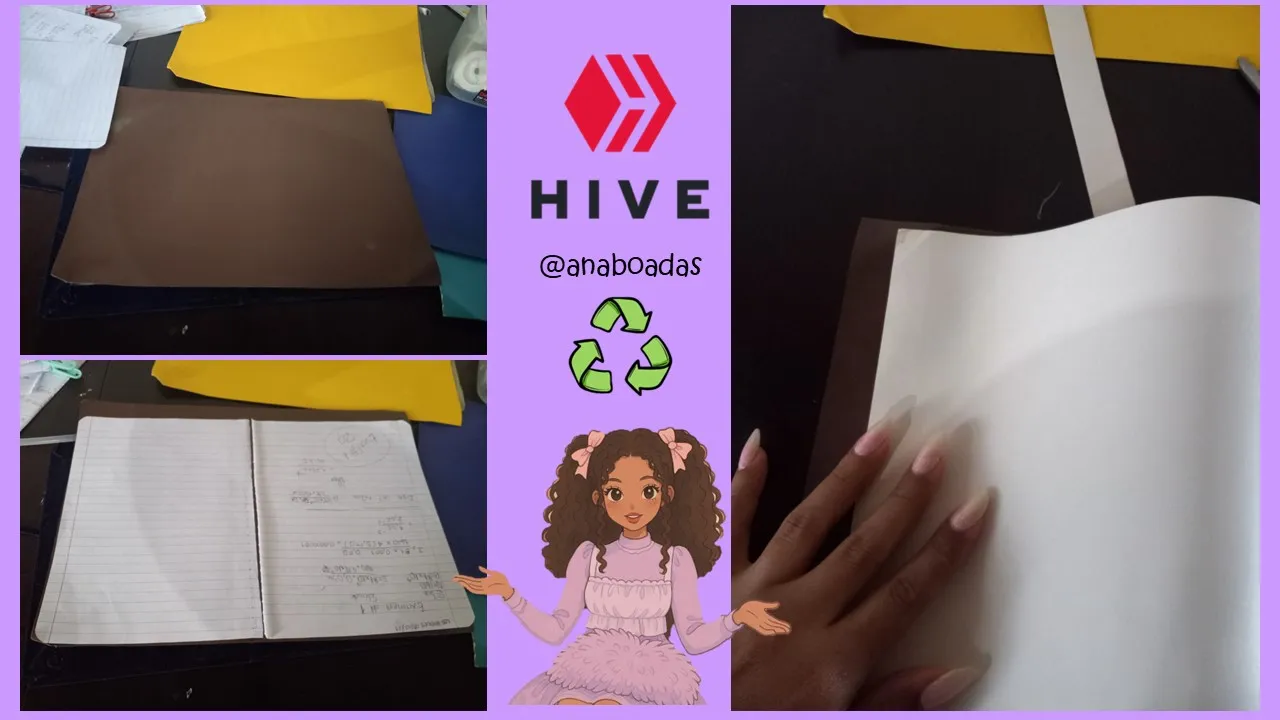
I had to cover the fabric lining that was left inside, and among the materials I never throw away, I found some construction paper. I measured it with two sheets from the notebook, and it was the exact size of the notebook cover. So I folded it in half, cut the edges round, and glued one side to the cover of the notebook. I did the same on the other side but with another piece of construction paper.
Tenía que tapar el empate de tela que quedaba por dentro, y entre el material que nunca desecho encontré papel de construcción, lo medí con 2 hojas del cuaderno y daba la medida exacta de la tapa del cuaderno. Así que lo doblé a la mitad, le corté redondo los bordes y lo pegué a una de las caras a la tapa del cuaderno, hice lo mismo del otro lado pero con otro papel de contrucción.
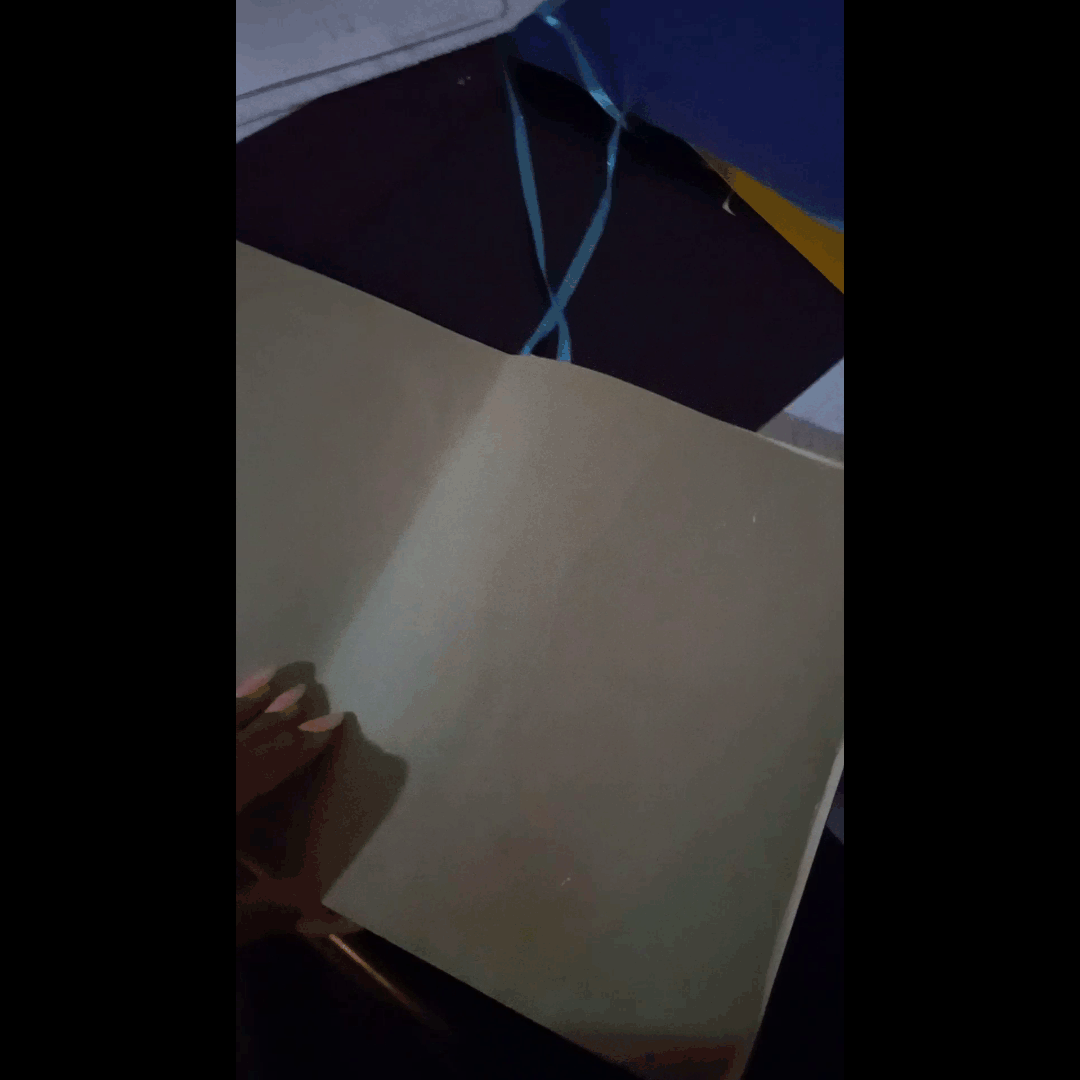
Right in the middle of the notebook, I glued a ribbon with hot glue to use as a bookmark.
Justo en medio del cuaderno, pegué con silicón caliente una cinta para usarla como marca libro.
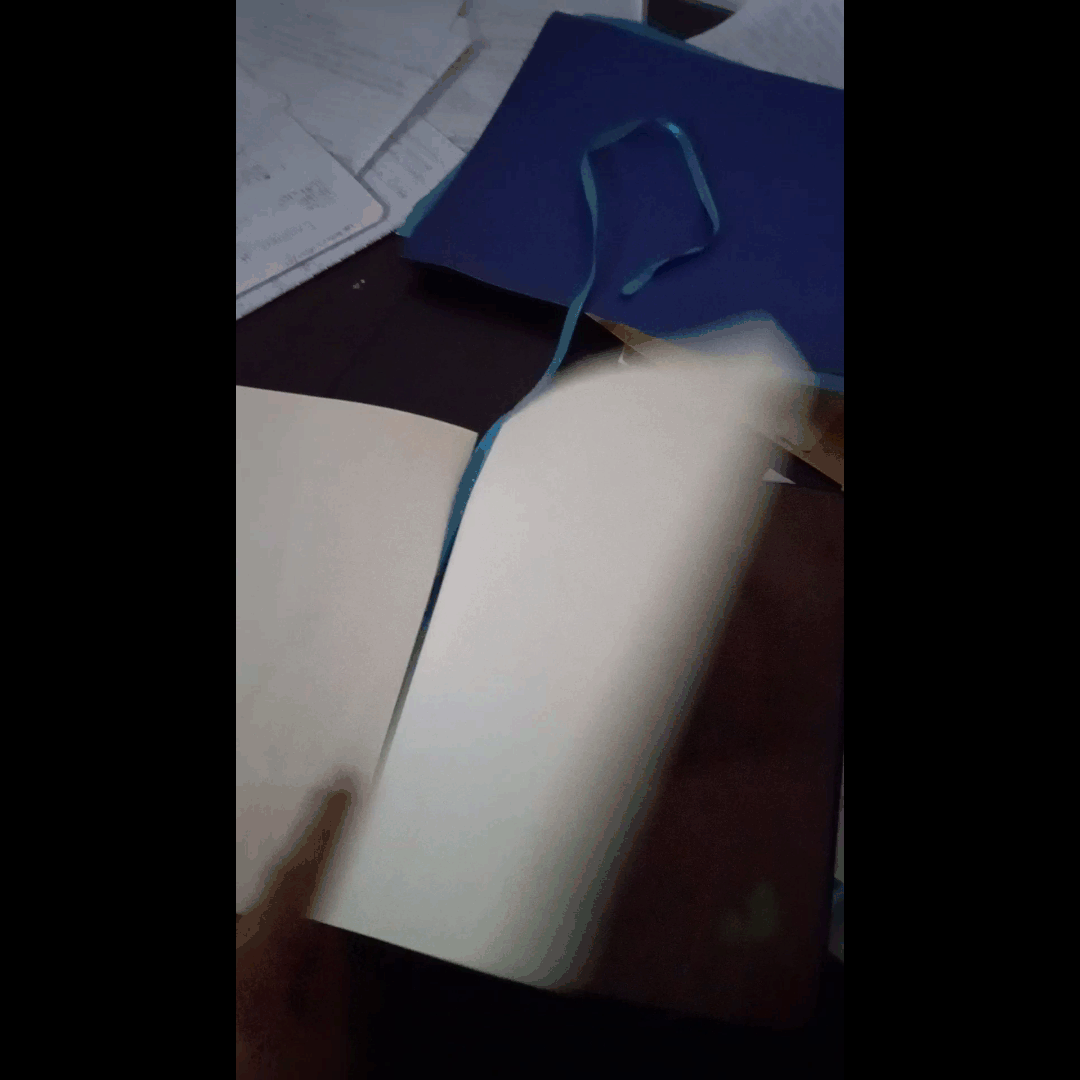
I let the leaves dry for a day and a half, so at this point I was able to glue them to the spine of the notebook with hot glue without any problems.
Dejé secar las hojas por un día y medio, así que en este punto las pude pegar al lomo del cuaderno con silicon caliente sin ningún problema.
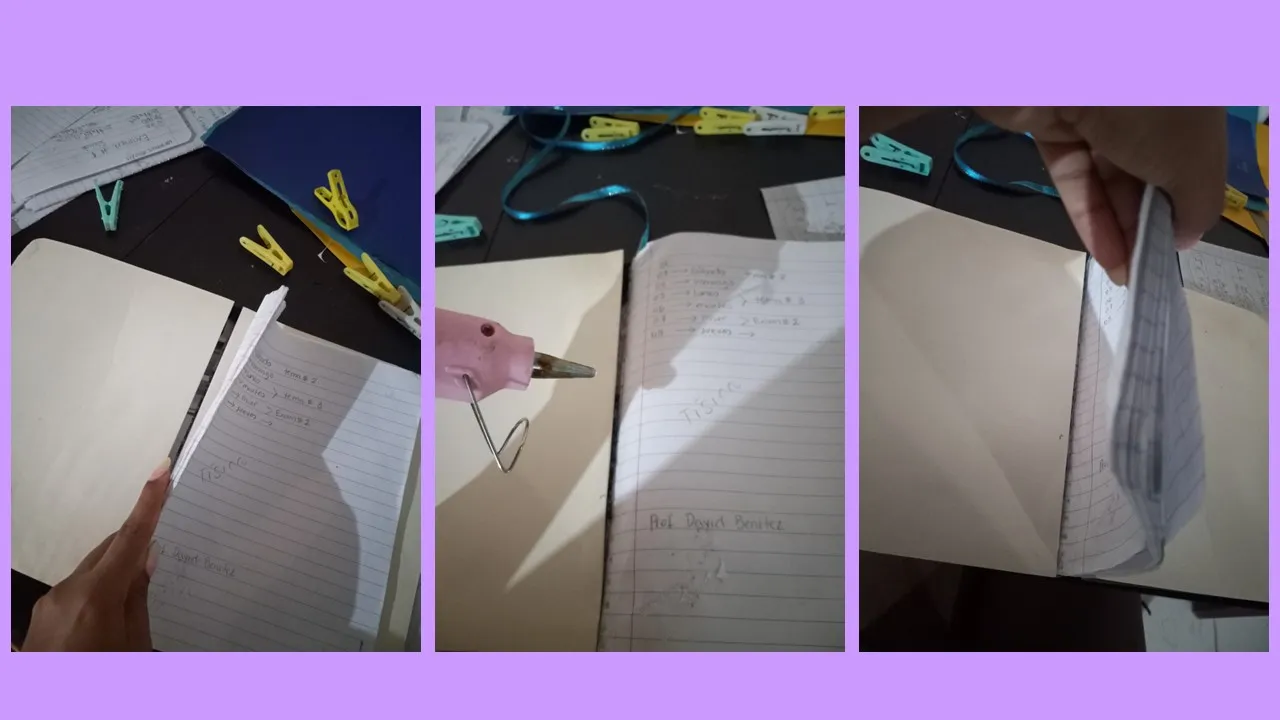
After gluing the sheets to the spine of the notebook, I decided to glue the first page to the back of the construction paper, and the last page to the back of the other side of the construction paper.
Después de tener las hojas pegadas al lomo del cuaderno, decidí pegar la primera página con la parte posterior del papel de construcción, y la última página a la parte posterior del otro lado del papel de construcción.
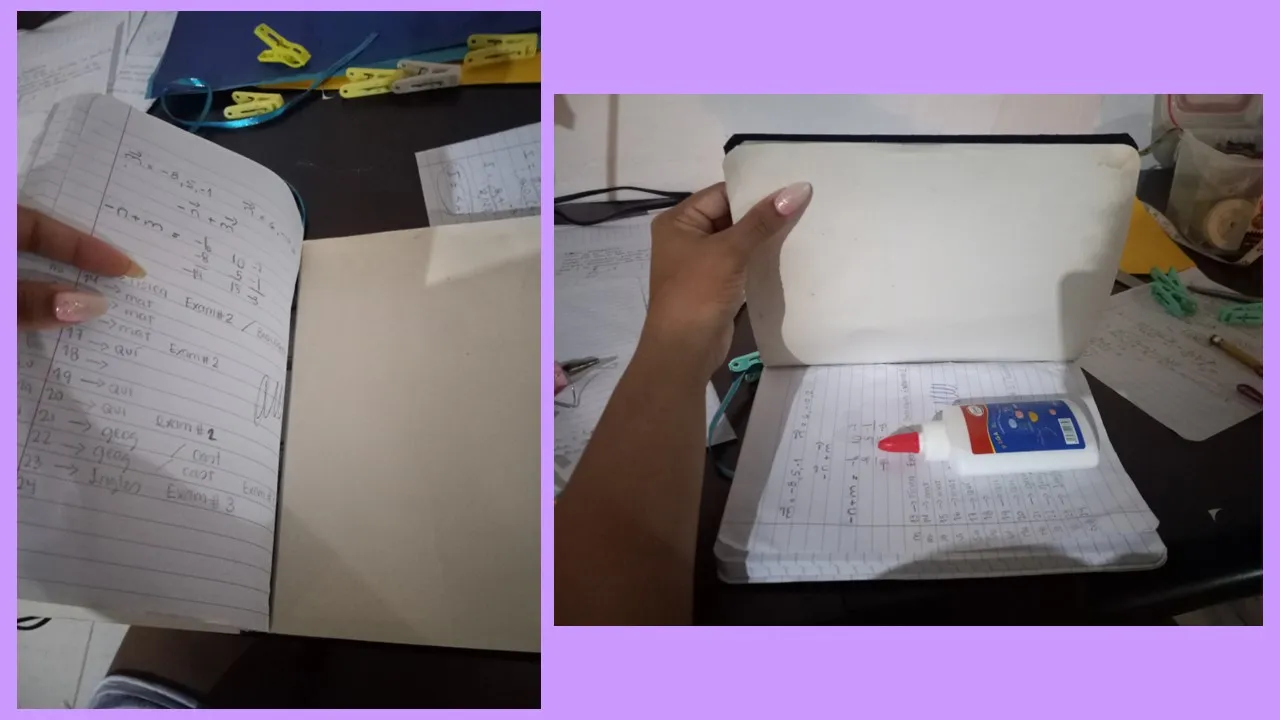
Since I decided to glue the first and last pages with white glue and then left it closed to dry, some of the pages became wavy due to the moisture in the glue.
Como decidí pegar la primera y última página con pega blanca y luego lo dejé reposar cerrado, por la humedad de la pega algunas hojas quedaron onduladas.
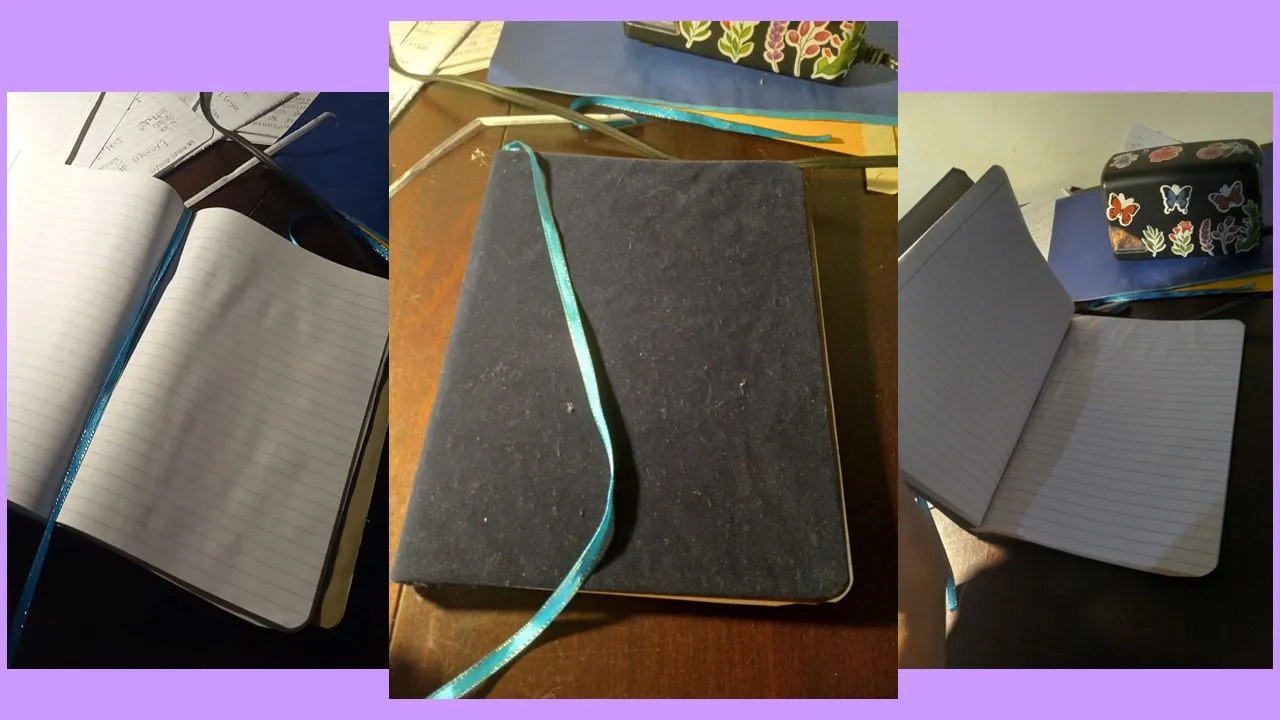
However, it remained fully functional and somewhat aesthetic, but most importantly, he loved the gift, so for me that made it all worthwhile.
Sin embargo quedó completamente funcional y algo estético, pero lo mas importante, le fascinó el regalo, así que para mi eso lo valió todo.
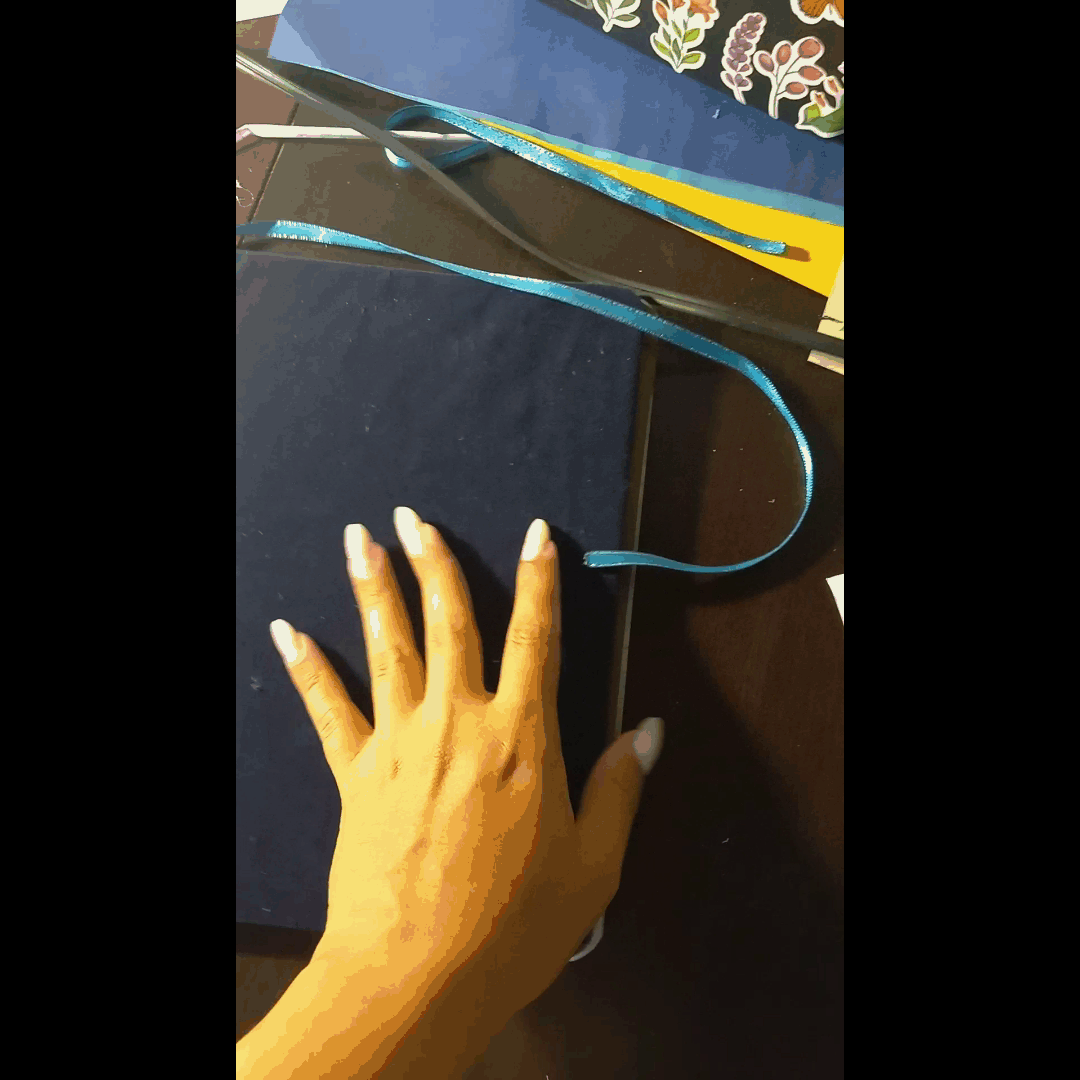
In this project, I spent nothing more than time and materials I already had at home. For me, the result was well worth it, and I gave new life to things that would surely have ended up in the trash.
Thank you very much for reading this far, and I hope it serves as inspiration for you.
En este proyecto no gasté mas que tiempo y materiales que ya tenía en casa, para mi el resultado valió mucho la pena y le di vida a cosas que seguro acabarían en la basura.
Muchas gracias por leerme hasta acá y espero te sirva de inspiración.